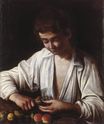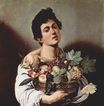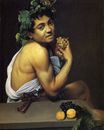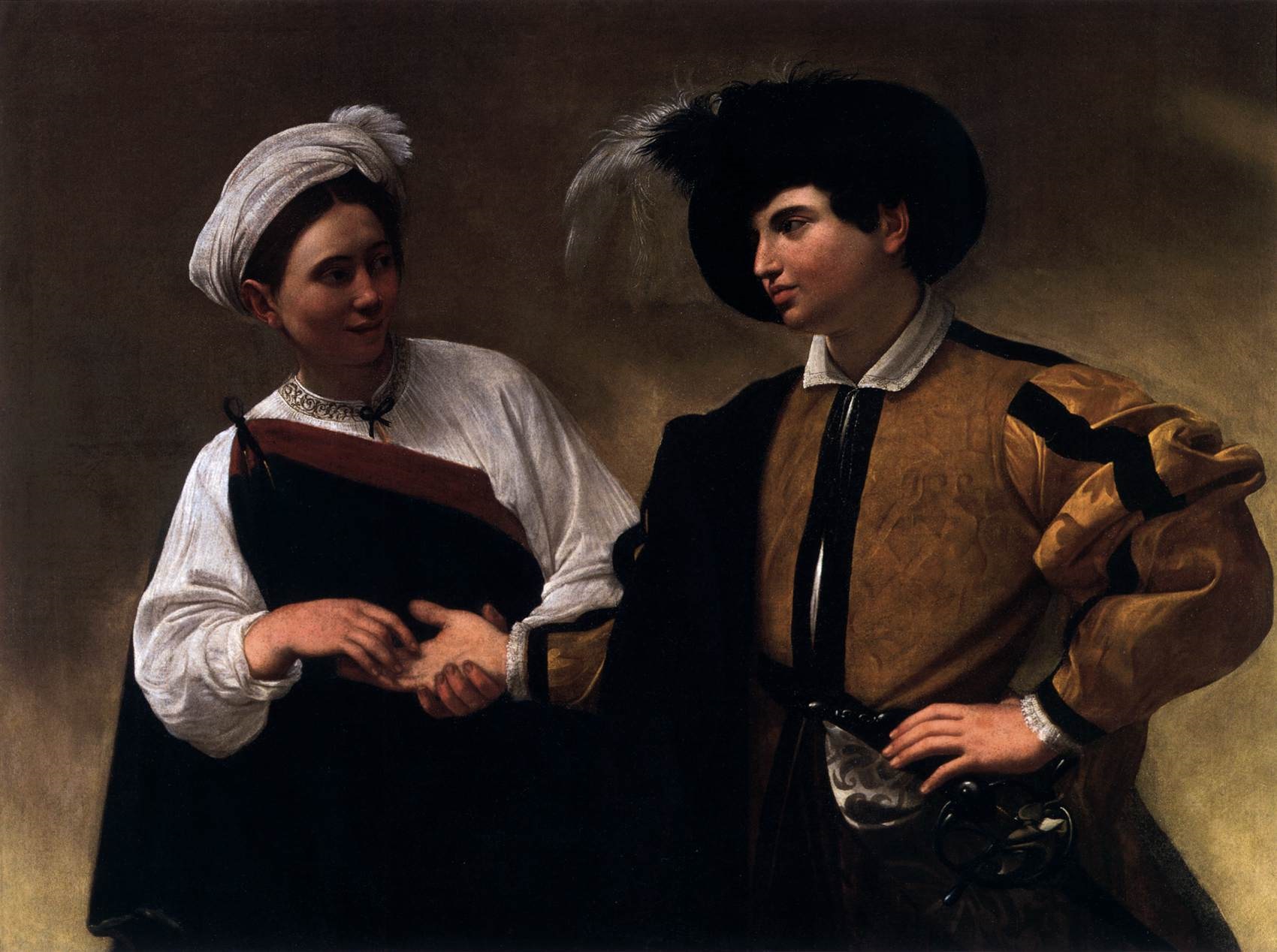Caravaggio - The Fortune Teller 1593-1594
 |
 |
 |
 |
 |
 |
 |

The Fortune Teller 1593-1594
115x150cm oil/canvas
Musei Capitolini, Rome, Italy
The image is only being used for informational and educational purposes
<< Previous G a l l e r y Next >>
From Wikipedia, the free encyclopedia:
The Fortune Teller is a painting by Italian Baroque artist Michelangelo Merisi da Caravaggio. It exists in two versions, both by Caravaggio, the first from 1594 (now in the Musei Capitolini in Rome), the second from 1595 (which is in the Louvre museum, Paris). The dates in both cases are disputed.
The painting shows a foppishly-dressed boy (in the second version the model is believed to be Caravaggio's companion, the Sicilian painter Mario Minniti), having his palm read by a gypsy girl. The boy looks pleased as he gazes into her face, and she returns his gaze. Close inspection of the painting reveals what the young man has failed to notice: the girl is removing his ring as she gently strokes his hand.
The Fortune Teller is one of two known genre pieces painted by Caravaggio in the year 1594, the other being Cardsharps. The Fortune Teller is believed to be the earlier of the two, and dates from the period during which the artist had recently left the workshop of the Giuseppe Cesari to make his own way selling paintings through the dealer Costantino. The subject of the painting was not unprecedented. In his Lives of the Artists, Giorgio Vasari notes that one of Franciabigio's followers, his brother Agnolo, painted a sign for a perfumer's shop "containing a gipsy woman telling the fortune of a lady in a very graceful manner".